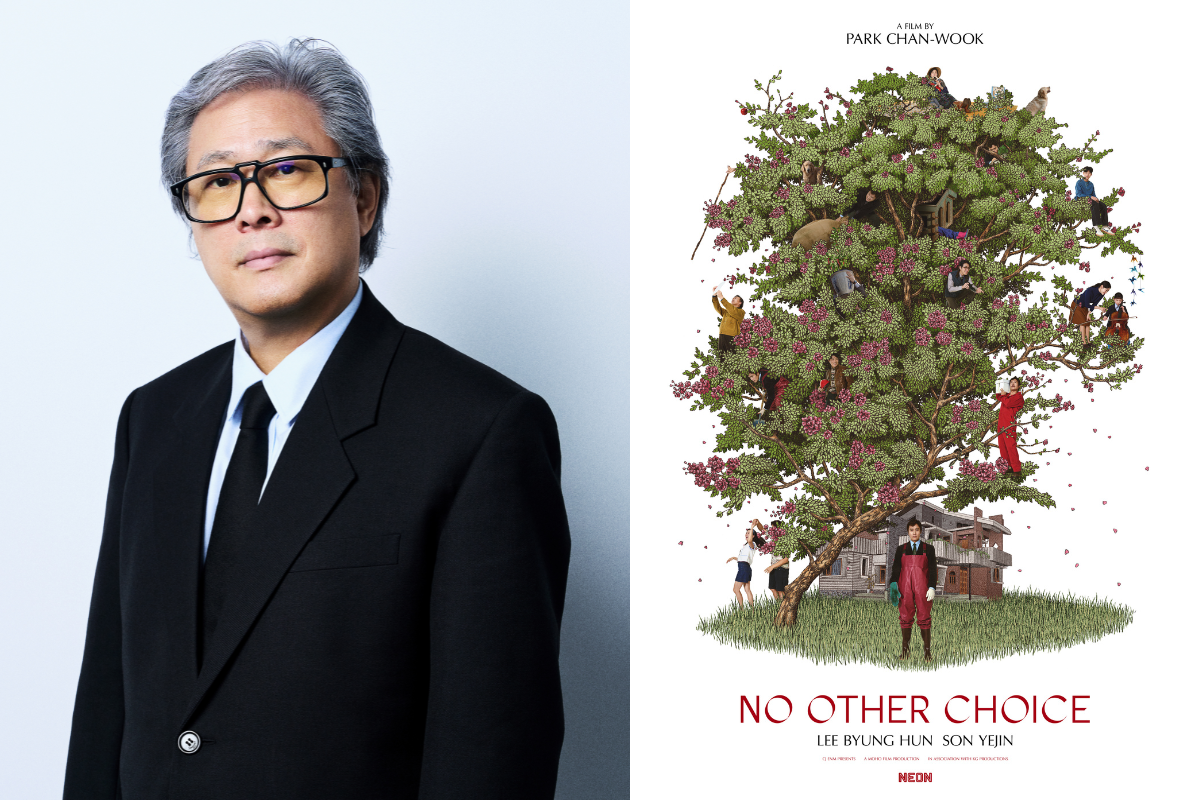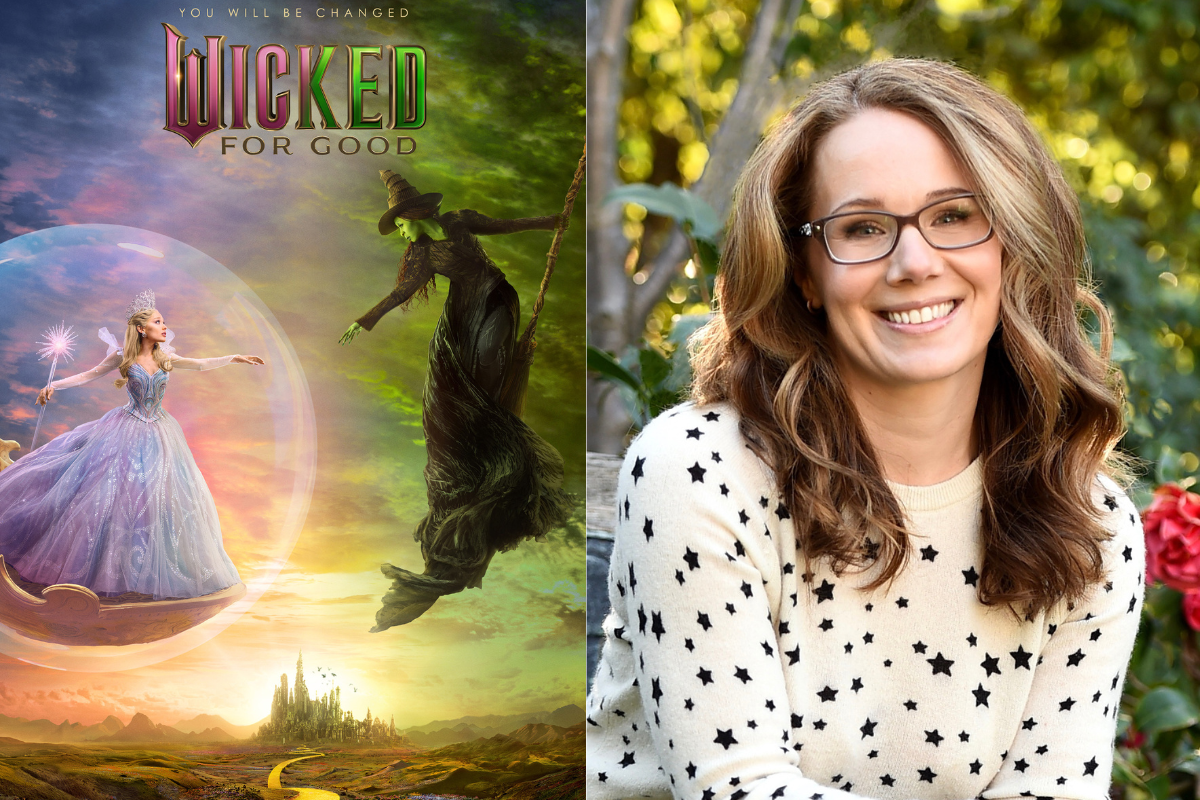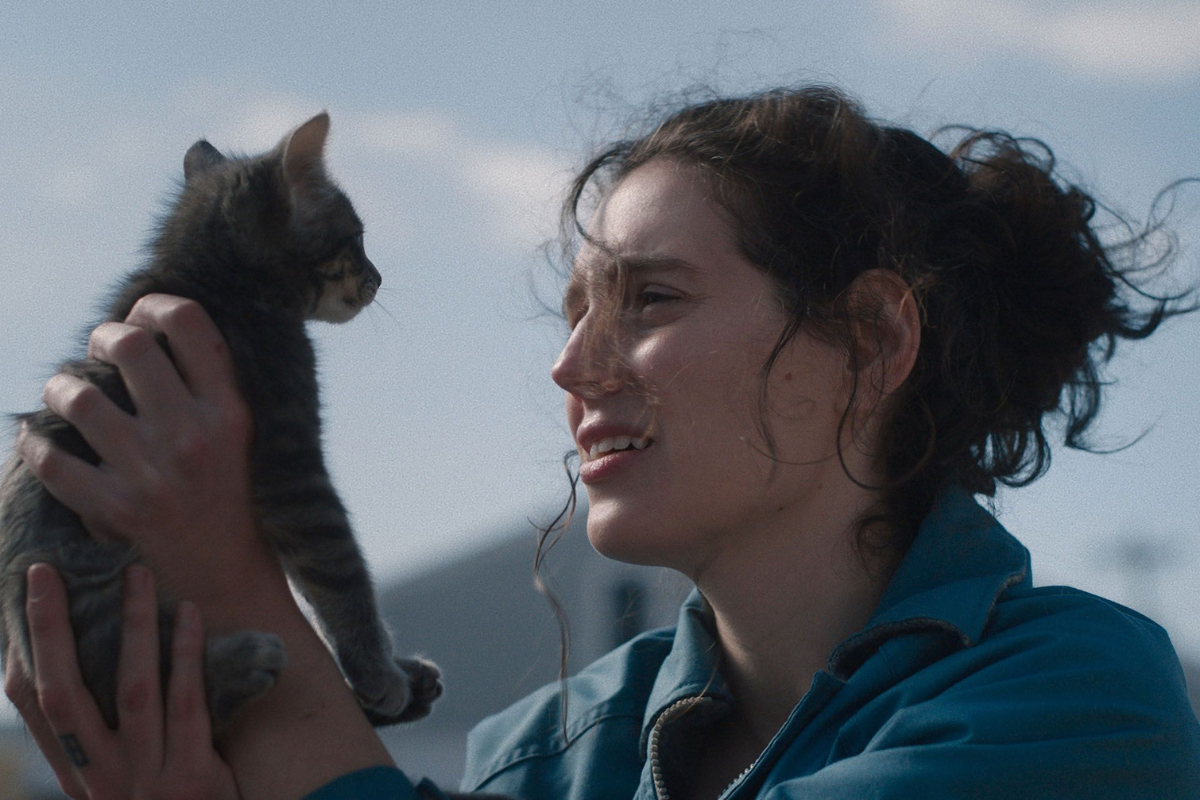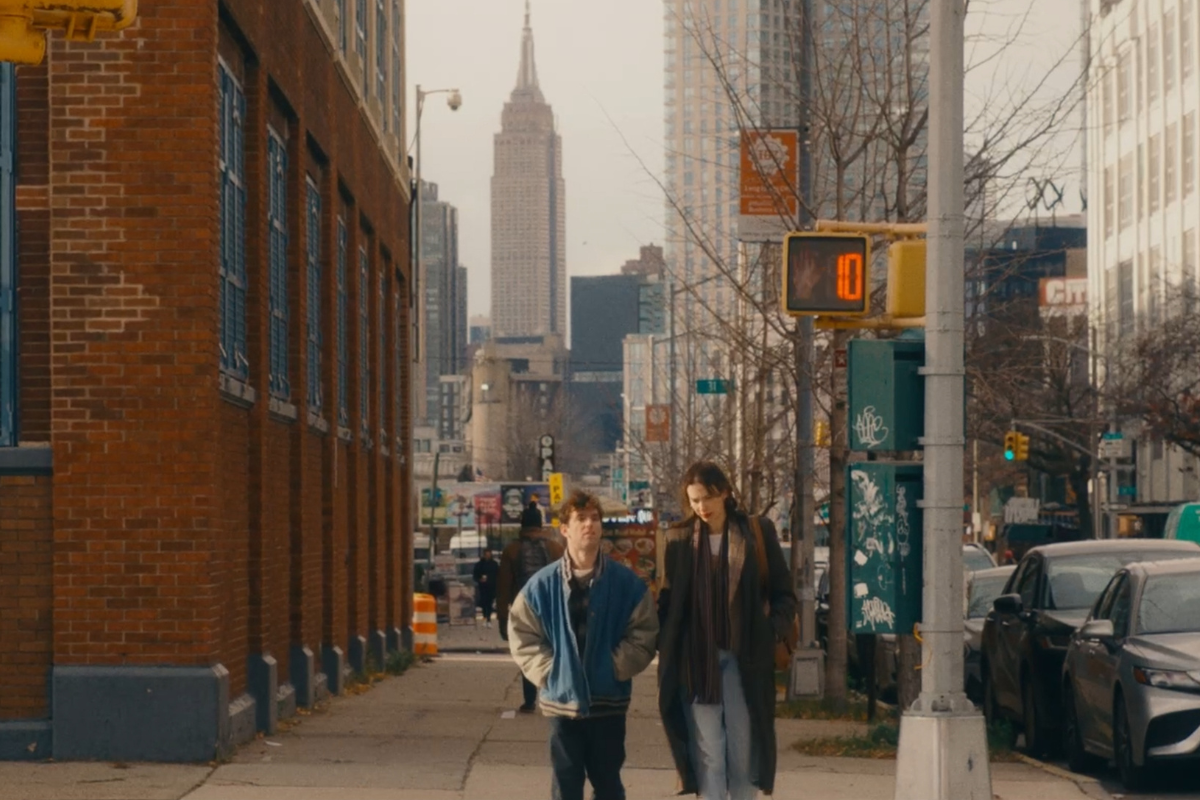How to Resonate with the Younger Audience: An Interview with Family Film ‘Camp Hideout’ Filmmakers Sean and Kat Olson
Sean and Kat Olson recently spoke with Script about their personal approach to the story, writing authentically, the importance of understanding how to resonate with a younger audience, collaborating with Christopher Lloyd, and so much more!
After a troubled teen steals an important item from two big city goons, he hides in a church summer camp and finds he must protect his new found friends at all cost when the goons track him down.
The family film landscape, I personally believe, is a creative space where you can take a lot of chances from a storytelling standpoint but also as a filmmaker, from creating a visual language, mixing genres, and go really big. This was affirmed by speaking with the wonderful creative powerhouse that is Sean Olson and Kat Olson, that you can have a lot of creative fun in the family film landscape, and it can also be a very rewarding experience.
This isn't Sean and Kat's first rodeo in the family film space, and this certainly won't be their last. This power couple has a lot more in the pipeline, and I for one am very excited for it. Both raised on 70s and 80s films, and heavily influenced by their themes, tone, and storytelling framework, they were able to imbue that into their latest family film, Camp Hideout, which Sean directed and edited, and Kate co-wrote the screenplay for.
Both Sean and Kat Olson recently spoke with Script about their personal approach to the story, writing authentically, the importance of understanding how to resonate with a younger audience, collaborating with Christopher Lloyd, and so much more!
This interview has been edited for content and clarity.
Sadie Dean: What was the development and writing process like with the other writers had, and when did Sean involved as a director?
Kat Olson: This is a sort of an interesting thing. You usually think with a writer and director that it started with me, but in this case it was actually backwards.
Sean Olson: So, I directed two other family films, F.R.E.D.I and Max Winslow, that our producer Jason Brown had seen and really liked. And he knew that, based on those two movies that I was comfortable with doing family content, working with kids, and doing this type of movie. And so, he reached out to me and said, 'Hey, I have a summer camp movie script, I'd like you to give it a read. If you're interested, let's talk about it.’ So, I read the script. I loved the idea. I love summer camp, I grew up going to summer camp, our kids both go to summer camp as well. And so, it was a big part of my life growing up being a Boy Scout. And there's lots of themes and things that I really gravitated to - so I hopped on.
And we started developing the script, originally, the script was shaped as from a 20-year-old’s perspective. And this being a kid's movie, I felt it was really important to shift that to something more kid-centered, that the kid is the driving force of the story, because that's what's going to resonate with our younger audience. And so, as the script started developing, that started changing, and then Kat - I would always show Kat the updates of the script - and then she would always give me ideas that we would hand over to the other writers. And eventually, it got to a point where her experience brought her in as the writer to do a really, really big draft.
Kat: Yeah, Sean had been working with the first two writers and there was a great foundation laid where we knew we had our main character, Noah, who was going to be our foster kid and kind of fallen on hard times and wasn't making the best decisions ends up at this summer camp. So, I had been consulting with Sean a lot, which is really fun we get to work on stuff together.
Jared Lapidus' and James Kilmoon's 'Office Race' is a Much Needed Throwback Sports Comedy
What the script really needed at that point was a really authentic summer camp experience. And I was a summer camp kid, we just never get the stink off of us even as adults. [laughs] … and this is such a reflection of like the 1970s and 1980s parenting, but the summer after kindergarten was the first year that I had gone to several, which is just crazy, I can’t imagine sending my six-year-old off to sleepaway camp, but I continued going to camp all the way through high school. I went to three different camps over the course of that and then have gone back and helped with staffing, like Sean said, we've got two kids in scouts and so it has been such an important part of my life and it was just a joy to share that nostalgia that I have for the experience. And I know how important that was for just developing character as a young person and be able to put that on the screen and model that for both kids and grownups who have been to summer camp. And then also those who haven't. So it's really a film, I hope that speaks to everybody.
Sadie: Because these are kids at summer camp, and we’re essentially seeing it through their eyes, how or where do you tap into that authenticity of a kid's voice when you're both adults?
Sean: I think having kids really has opened us up to so much perspective on the storytelling aspect of things.
Kat: And it's all about relationships. Growing up is hard. And Parenting is hard. [laughs] Even just like family movie night can be hard sometimes. And so, that's a great passion for both Sean and myself, is to really up the bar for family entertainment, and bring something to the table. Because I know, I'm speaking to my parents out there, there are some things that might really speak to kids, but less so to adults, or might be great for an adult audience, but then maybe there's some stuff you're not quite ready to introduce your kids to yet. And we really wanted to lay out a story where that's fun for everybody. But that also really feels authentic to the growing-up experience.
And it is a very safe place for parents, where we feel like we can all spend this time together, and enjoy it and have a real quality takeaway, you know, maybe that sparks conversations later or affects even a student at school after that, or camper at camp that might interact with their peers or see somebody who feels like a fish out of water. If you haven't felt that way before, maybe you observe a kid who is feeling that way, and that models that relationship.
Sadie: I keep thinking of Corbin Bleu's character Jake, which is like that mentorship, responsibility, and knowing when to step in, and when to take a step back, even though you want to jump in and help.
Kat: Yeah, he really nailed that character. As a caregiver, in that situation, as a parent, or as a counselor, you don't want to manufacture those opportunities for kids. But when they come along, really learning how to, like you said, get involved in a way that is exactly what that kid needs at that moment.
Sean: It was also interesting to see Corbin play that mentor role with the young cast on set as well. And he did a lot of that, because he's been acting since he was two years old. And a lot of these kids, they've never been on a movie set before. So, to have that leadership, translate both within the script, but also on set was really, really incredible to see.
Sadie: As a director, was there anything that you've picked up from him in how you communicated with the kids on set?
Sean: I think the biggest takeaway of working with somebody like Corbin is he's such an authentic person, in general. He's the type of guy who when he comes to set, introduces himself to everybody. It doesn't matter if you're at the top of the call sheet or at the bottom, he definitely reaches out and introduces himself. And not only that, because some people when they introduce themselves, you forget everybody's names, he remembers everybody's name. He just brought such positive energy to the set. And a lot of the kids grew up watching High School Musical, so they were, it's funny to say like they're fans of Christopher Lloyd, but for them, Corbin Bleu was a bigger thing than Christopher Lloyd. But when Corbin Bleu got to meet Christopher Lloyd it was like me meeting Christopher Lloyd, it was like, "Oh my gosh!" But he couldn't have been kinder.
Sadie: Once you had the cast in place, how much were you going back to the material and fine-tuning those voices for each of those characters, especially someone like Christopher Lloyd, who can say so much with just a look on his face?
Sean: There is a scene that once we cast Christopher Lloyd, that was probably a half-a-page scene, it was a very short scene that I always felt should have been more of an emotional scene. And it's between Christopher Lloyd and Ethan Drew in the truck. And it was it was such a quick little short scene. And when we cast Christopher, I talked to the producers, I talked to Kat, I was like, ‘I feel like this needs to be a moment. It should really be a moment between the two characters.’ And so that's one of the things that as we were shooting, as, of course, you know, there's always revisions and changes, and I think that was probably the biggest change.
Kat: I'm so proud of the work itself, but then you find out that Christopher Lloyd has been cast I just about fell over. [laughs] To be able to have him put your material on screen. But that scene at the end when Falco brings Noah back, really figuratively and in a very real way back to camp, and really breaks through to him. And it was fantastic to have him.
Sean: I think Christopher read an earlier draft of the script when he decided to do the movie. But once we built that out, that was something that really resonated with him as an actor as well. He had pulled me aside, he's like, ‘I'm really looking forward to shooting this scene between Ethan and I,’ and that, I think, that was what's so great about working with Christopher is he's been around for a long time, we're all fans of his growing up, but he approached it in such a way that he wanted to be an active participant in the making of and the designing of the character. Picking out specific pieces of wardrobe, just the way that he walked and talked and everything. And I think it was a testament to him being the legend that he is that we got to work with him. He couldn't have been a better collaborator.
Sadie: In terms of tone and the visual language of this film, there’s a lot of fun nods to other films and genres, like the Spaghetti Westerns – what was your collaboration like with your cinematographer Isaac Alongi, especially shooting on location?
Sean: This is our third feature together…I've worked as an editor, and he's shot some stuff, but this is our third movie together. So, what's so great about Isaac is we just collaborate really, really well together. We have a shorthand. We both think really fast on our feet, because there's a lot of times when you're shooting the movie, you're losing the light, you're losing time. And with this movie, one of the biggest challenges was the schedule - and our first AD Kyler Wilson, it took a lot to schedule this – because you have school time, downtime, kids hours, and so there would be moments where we would get into a pinch, we would figure out how to accomplish a scene with less angles and things.
One of the things that I really liked to do, and especially on this movie, was I was trying to do a lot of moving masters. So, we would have the Steadicam that would move around, and it would reveal certain things, and it would kind of bring you in the space so that you're not just in that standard over-the-shoulder type coverage. Because that's an easy go to and there's scenes that warrant that. But if you could get away with it, and we have the space of being outside, because sometimes you're in a small room, and it's like, ‘OK, this is all I can get,’ or you shoot a doorway scene, ‘this is all I could get.’ So, we worked really hard to construct shots.
Tapping Into the Forward Momentum of Rom-Com 'The List' with Director Melissa Miller Costanzo
And he and I and the gaffer, Ben we all had an Airbnb together. And so, every night at the end of the day, we would look through the footage. We had a shot list prior to shooting, but then you're constantly refining it, what worked, and what didn't work. And so, we would block stuff out in the living room, I'd have my iPhone, and I'd be like, ‘OK, let's try this, let's do this, let's do this move.’ And then we would look at it. And it was always an evolving process.
There are, if you really look, there are homages to certain movies in there, you wouldn't think a family film would have an homage to Psycho. But when we're talking like nightmares, the scary scene with Falco, and the door opens and you see the girl screaming, and then you go tight to her mouth, like that's a direct homage to Psycho. We have other homages as well to Ferris Bueller's Day Off, the breaking the fourth wall and talking to the camera. And we also have it a little homage, and I think this was Ben's idea, it was That ‘70s Show where the girls are gossiping at that little table scene.
So, we really just tried to play with like the energy of a scene with moving the camera and then contrasting that with a really quick-paced editing style for the action scenes. And they're always like those super-fast shots. Then we did some center framing which I thought was really fun where the characters are looking straight down the lens of the camera and we did that for when Noah first arrives at camp because we kind of wanted to put us in the head of the Noah character. And that kind of went with the score as well - the score that you hear is the cool things that Noah is thinking, like we're doing a heist or he's doing a Western. But the Spaghetti Western thing, that’s all Kat - that was her idea with the beach ball. And it was kind of a pain to figure out how to make that beach ball to bounce. [laughs]
Kat: It's such a privilege for me as a writer when Sean and I get to collaborate on things, it's the most fun, because we can talk through scenes as I'm putting them on paper with the practicality that he's going to need on the day of the shoot. And then he edited this too. That's crazy, just to get the opportunity for me to really look at takes, work through it together, and talk about the benefit of having one take versus another and how that's reading and how it was intended. Or maybe how somebody has even made it better - I hadn't thought of it that way - but that's an amazing take on this. So, it becomes like a really collaborative process soup to nuts, which is so fun for us.
Sadie: Any advice for those writing or directing a family film?
Kat: Sean mentioned something earlier, that would be my number one piece of advice, which is just remember that your audience is smart. I think sometimes people write down to kids, and it makes for entertainment that can sometimes be tedious for adults. And it's also not engaging for kids. I know, for our boys, the things that are most intriguing for them, I think, is when they can really see those struggles happening and portraying that in an honest way. And not everything is a laugh track outcome. Growing up is hard, and parenting is hard. And letting that authenticity be there - making room for that.
Sean: I agree 100%. I think for doing a family film, the best thing that you can do is get a really good casting director. And have somebody who can find that young cast, because a lot of times you're getting people that are at the very beginning of their career, they may not have a lot of credits, they may not have been on set a lot. And so, if you have a very good casting director that has a really good eye for up-and-coming talent, that makes a huge difference.
Like for instance, with this, Roe Baker, she put a net out all over the place to find people. And we had a variety of people for each of the roles and the one thing that you always kind of look at when you're looking at a family film is like, what is the movie that we want to make?
But having a really good casting director that can find that talent makes all the difference in the world, because having somebody who can take those words, and put it up on screen and give you an emotional, nuanced performance, makes all the difference. And then, the rest of the team, make sure you have a really, really strong team.
Camp Hideout is now playing in Theaters.
Learn more about the craft and business of screenwriting and television writing from our Script University courses!
Sadie Dean is the Editor of Script Magazine and writes the screenwriting column, Take Two, for Writer’s Digest print magazine. She is also the co-host of the Reckless Creatives podcast. Sadie is a writer and filmmaker based in Los Angeles, and received her Master of Fine Arts in Screenwriting from The American Film Institute. She has been serving the screenwriting community for nearly a decade by providing resources, contests, consulting, events, and education for writers across the globe. Sadie is an accomplished writer herself, in which she has been optioned, written on spec, and has had her work produced. Additionally, she was a 2nd rounder in the Sundance Screenwriting Lab and has been nominated for The Humanitas Prize for a TV spec with her writing partner. Sadie has also served as a Script Supervisor on projects for WB, TBS and AwesomenessTV, as well as many independent productions. She has also produced music videos, short films and a feature documentary. Sadie is also a proud member of Women in Film.
Follow Sadie and her musings on Twitter @SadieKDean







